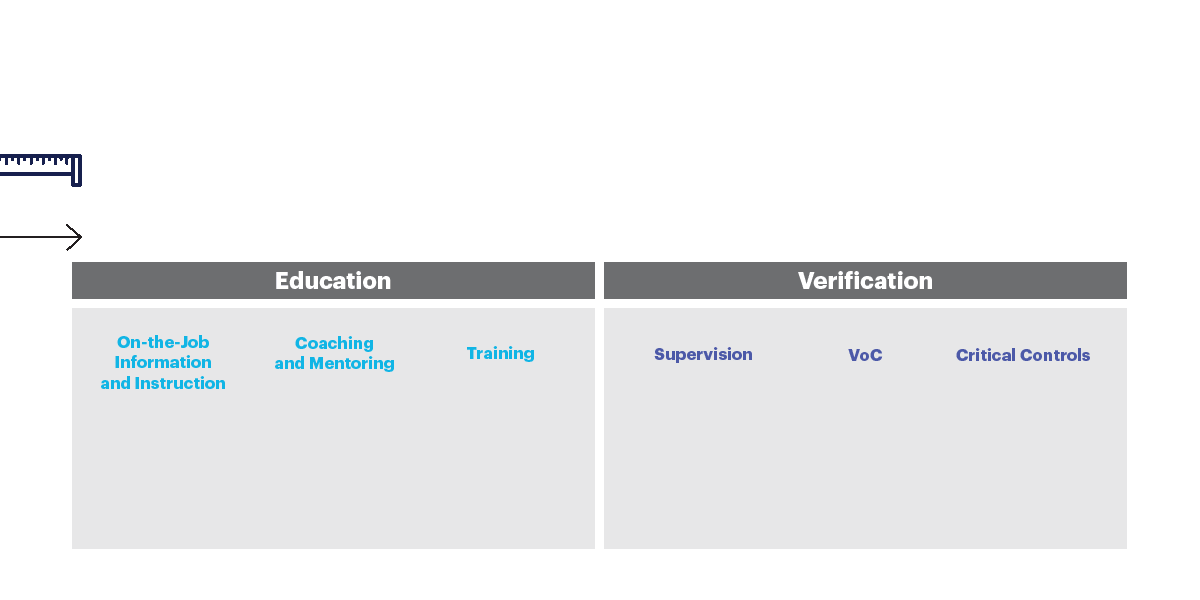The latest statistics from SafeWork Australia show, on average, plant & equipment account for 71% of mechanisms related to worker fatalities.
The use of competent operators is a common control measure to manage mobile plant related risks, making sure workers have the right knowledge and skills to do the job safely.
Verification of Competency (VoC) is a method of assessment that assists employers meet Workplace Health and Safety (WHS) requirements and ensures operators have the demonstrated skill and knowledge required to carry out the task to a standard necessary for the safety and health of workers.
Our partner - risk, health and safety advisory firm FEFO Consulting, has provided six tips to ensure your company is up to speed. They are:
1. Understand Requirements
Understand your legal obligations for VoC, WHS duties, and risk of liability. When seeking to understand requirements, remember to strike a balance between compliance vs. performance. Often VoC is seen as a compliance activity, but it can be an opportunity to coach, build, and create high performance.
2. Identify Material Risk
Explore your options for taking a VoC risk-based approach and the relationship with critical controls. This graphic (below) provides a continuum of lower risk equipment such as a tape measure that might require basic instructions, through to high-risk items such as a tower crane. Higher-risk items often warrant not only information, instruction, and training as well as supervision, VoC, and critical control checks.
When to complete a VoC? The decision to complete VoCs often relates to an organisation’s risk appetite and the thresholds set for the type of plant or activity needing verification of competency. The timing of completing verifications are often scheduled to align with operational programs.

3. Confirm Competencies
Competency requirements for the operation of plant may include a combination of licences, formal training, and/or verification of competency process.
To decide what is suitable and adequate you must consider:
-
The nature of the work the person will do
-
The nature of the risks associated with the work at the time the information, training or instruction is provided
-
The other control measures implemented
WHS Regulations set out work which requires a High-Risk Work Licence. Activity often requiring high-risk work licenses include:
-
Scaffolding
-
Dogging and rigging
-
Operating certain types of cranes and hoists
-
Operating a forklift truck
-
Operating a reach stacker
-
Operating a boom-type elevating work platform above 11 metres
-
Operating a boiler, steam turbine, or reciprocating steam engine
Where a High-Risk Work Licence is not required by legislation, the following examples of appropriate competency may be acceptable:
-
Licence or Certificate of Competency
-
Statement of Attainment or Certificate issued by a Registered Training Organisation (RTO)
-
Evidence of formal VoC assessment
4. Create Assessments
Build assessments to support designed outcomes. When creating assessment tools to verify competency, first understand your objectives. What do you want to achieve? Is your focus compliance or performance? There are various human factors enabling or inhibiting performance. Often workers know how to perform a task, yet the practices of behaviours are often ineffective. This is called the “Knowing – Doing Gap”.
5. Coach and Verify
Gain an understanding of leadership principles to coach, verify competency, and build high performance. As part of verification, coaching conversations are a great way to engage and enable workers to self-reflect, learn, and own improvements. This often involves using assessment tools and methods to ask effective solution-focused questions.
6. Learn and Improve
Understand how to access additional resources and options to continually learn and improve. With a focus on continual improvement, VoC can enable individual workers, teams, and organisations to build high performance. Completing a VoC with a focus on only compliance can be a missed opportunity.
Digital solutions and VoC
Managing your safety with a digital solution not only saves you time, paperwork, and provides data to make informed decisions, it also plays an important role in the VoC process. As a site operations tool, HammerTech can assist your business with VoCs through the modules within the current platform:
-
On-boarding: Capturing licenses/ tickets/ VoCs digitally as part of a worker’s online induction.
-
Training and license management: Being able to track worker certificates and expiry dates in an automated matrix to easily to avoid lapses.
-
On-going verification of competency in the field: Being able to access licenses and certification information on mobile devices with a simple search using either first or last name, or search for workers by VoC/competency.
-
Equipment risk management: Preventing unlicensed workers from operating plant and equipment by linking specific equipment pre-start checklists to competency requirements.
-
Reporting: Generating training matrix reports automatically which highlight gaps and expirations in VoCs across the workforce pro-actively.
Thanks again to the team at FEFO for sharing their approach to help construction companies through the VoC requirements.
To learn more about verifying and managing competency through HammerTech book a meeting with one of our consultants.
About FEFO Consulting
FEFO Consulting is a purpose-driven risk, health & safety advisory firm committed to helping others strive for excellence and prevent harm. With over 100+ years of combined operational, safety, and well-being leadership experience, the FEFO Consulting delivery team shares collective expertise that reaches across 20 countries, many industries, and complementary disciplines. For more information, visit www.fefo.com.au





